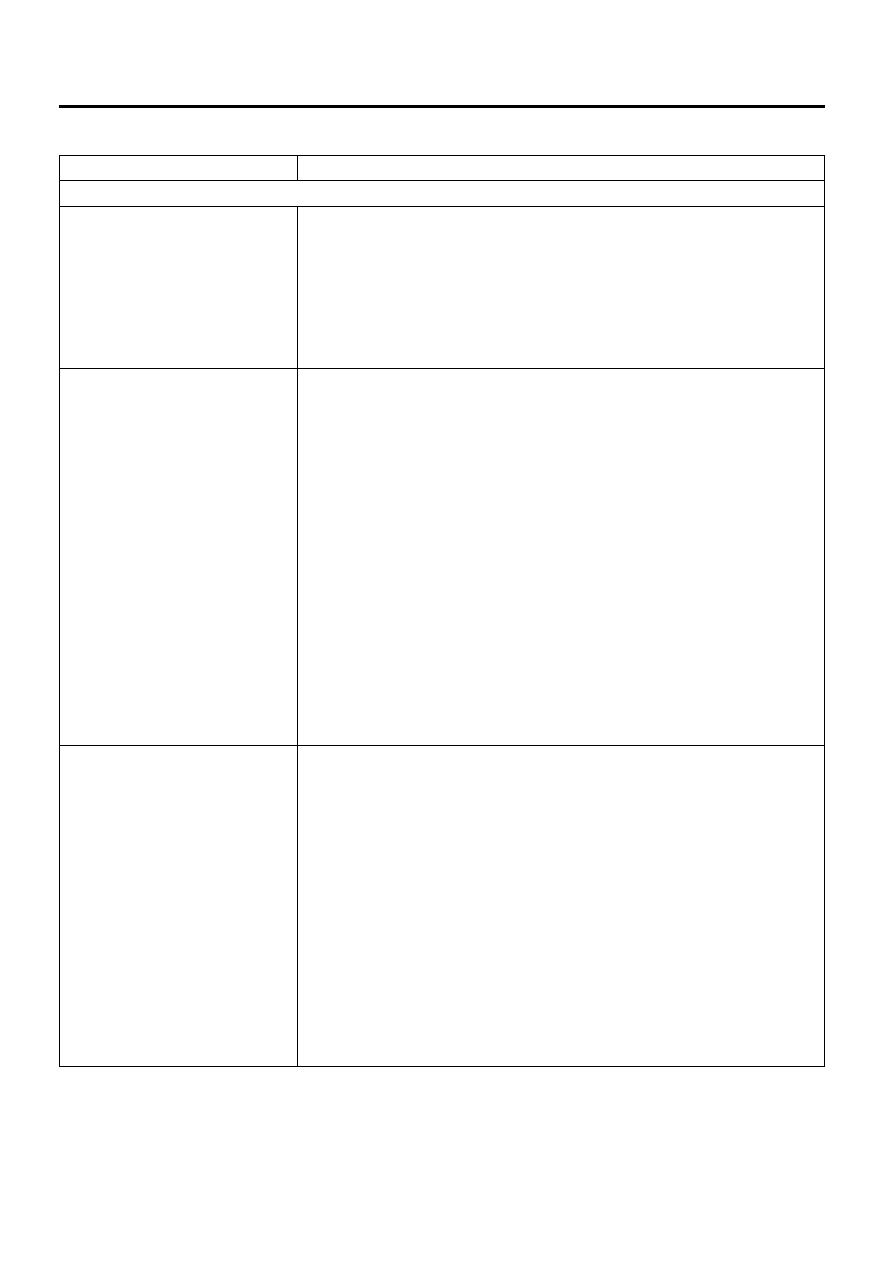Isuzu N-Series. Service manual - part 726

6E-326 Engine Control System (4HK1)
Excessive Smoke (Black Smoke)
Checks
Action
DEFINITION: Black smoke under load, idle or start up hot or cold.
Preliminary Check
• Ensure the vehicle has an actual problem.
• Inspect the engine control module (ECM) grounds for being clean, tight, and in their
proper locations.
• Remove the air cleaner and check for dirt, or for air ducts being plugged or
restricted. Replace as necessary.
• Inspect the fuel quality (cetane index).
• Inspect the engine oil level and quality.
• Inspect the programmed fuel injector ID code for each cylinder.
Sensor Checks
Inspect the engine control sensors for the following conditions. Refer to the Tech 2
Data List in this section.
• Use the Tech 2 to compare the Coolant Temperature with the Intake Air
Temperature (IAT) and Fuel Temperature (FT) on a cold engine condition. If the
difference among temperature reading is more than 5
°C (9°F) on a cold engine,
check for high resistance on the low reference circuit and signal circuit or for a
skewed sensor.
• Use the Tech 2 to observe the Fuel Rail Pressure (FRP) Sensor parameter with the
engine OFF. The FRP Sensor on the Tech 2 should read 0.9 – 1.0 volt with the key
ON and engine OFF after the engine has stopped running for a minimum of 2
minutes. If not, check for high resistance in the 5 volts reference circuit, low
reference circuit, signal circuits or for a skewed sensor.
• Use the Tech 2 to observe the Differential Fuel Rail Pressure parameter at idle and
W.O.T. (accelerator pedal full travel) in Neutral. Differential Fuel Rail Pressure
parameter should always be within
± 5 MPa (± 725 psi).
• Use the Tech 2 to observe the Boost Pressure and Barometric Pressure (BARO)
with ignition ON and engine OFF. Boost Pressure and BARO parameters should be
within the 1.0 psi (7.0 kPa) each other.
• Use the Tech 2 to observe the Accelerator Pedal Position (APP) Angle. APP Angle
parameter should change linearly from 0% to 100% according to the accelerator
pedal operation.
Fuel System Checks
Inspect the fuel system for the following conditions. Refer to the Fuel System section.
• Inspect the fuel supply pump operation.
Notice:
The fuel supply pump must be timed to the engine and adjustment value must be
learned to the ECM.
• Perform the Injector Balancing test with the Tech 2. Repair the wire or replace the
appropriate fuel injector that does not change engine speed when commanded
OFF.
• Perform the Injector Forced Drive test with the Tech 2. Repair the wire or replace
the appropriate fuel injector that does not create a clicking noise (solenoid
operating noise), contents an interrupted noise or has abnormal nose when
commanded ON.
• Use the Tech 2 to observe the Cylinder Compensation for each cylinder at idle. If
there is a cylinder that is excessively high or low value, it may indicate faulty fuel
injector, weak or slightly seized cylinder or an incorrectly programmed fuel injector
ID code.
• Inspect the fuel injectors. Remove the injectors and visually inspect.